As a Chicagoan, every day is a great day to adventure around the city—unless you’re a pet owner taking a walk during the annual Chicago Air & Water Show. As the most iconic city in the Midwest, Chicago is a lakeside oasis full of art, outdoor spaces, and some of the best museums in the world. There’s so much to do here that on a first-time visit, it’ll be impossible to fit it all in. That just means you’ll need another trip to Chicago!
There is plenty of activity to be enjoyed in the Windy City. That said, the family-friendly activities listed below are some of the most popular for tourists, based on their online ratings. On top of that, the choices are also solidified by this writer’s experience as a Chicagoan who loves exploring their own city. Some activities are free, while others have an entry fee. But Chicago has a plethora of both.
If you plan to combine activities like the Field Museum, Shedd Aquarium, and Adler Planetarium, it’s worth considering a CityPass purchase. Buying entry tickets separately for museums across the city is often more expensive than buying a multi-entry pass. Usually, you can also buy skip-the-line access, which, especially in the summer, can be a major timesaver. There are also free or discounted entry days for Illinois residents at places like The Field Museum, so keep an eye out for those if you are a fellow resident.
See the animals at Lincoln Park Zoo

For free activities in Chicago that suit all kinds of visitors, you can’t go wrong with the Lincoln Park Zoo (LPZ). Founded in 1870, the LPZ is the fourth-oldest zoo in the country. Constant improvements are being made to the animal facilities, bringing the zoo into the modern age. You’ll also find walking paths with some of the best views of the Chicago skyline.
Throughout the zoo, there are over 200 animal species to enjoy and over 850 plant species strewn around acres upon acres of gardens. Some of those animals are varieties you’re unlikely to see elsewhere, including the critically endangered eastern black rhinoceroses and Jamaican iguanas, which were believed extinct.
You can easily spend several hours here exploring and noshing at the several dining establishments in the zoo. Plus, they host an incredible ZooLights event each holiday season — which isn’t free but is a small entry fee for the zoo. ZooLights is one of this writer’s absolute favorite holiday activities in the city year after year, especially with a Rumchata hot cocoa in hand.
Admire the art at Art Institute of Chicago
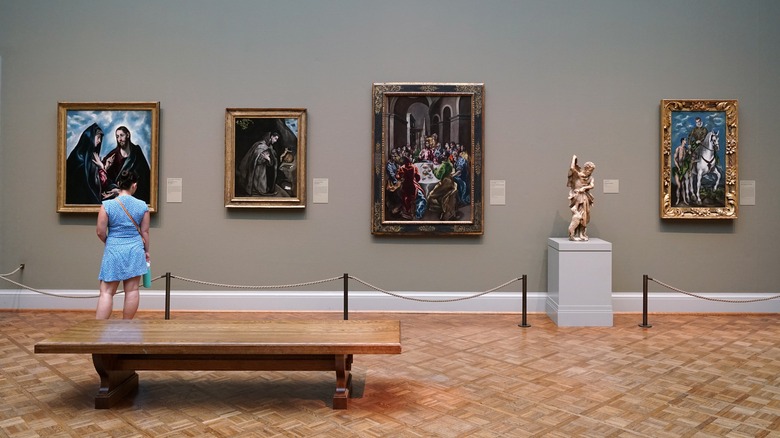
Although it isn’t free, the ever-iconic Art Institute of Chicago (AIC) is one of the world’s foremost art museums. This gigantic art museum is hard to get through in just an afternoon, so you’ll need to decide what you want to see ahead of time. There are some works of art here you won’t find anywhere else, like “American Gothic,” “A Sunday on La Grande Jatte,” and “Nighthawks.”
If you need some AIC gallery recommendations because you can’t dedicate a full day to a visit, there are several that are personal favorites. Those favorites include the Prints and Drawings gallery, Photography and Media, Film and Media, American Art, and the Architecture section. There are over 300,000 works in the museum’s collection spanning over 5,000 years. AIC is considered one of the best collections of paintings made within Western culture.
Even if you’ve visited this nearly one million square foot museum, there are over two dozen special exhibits throughout the year. These temporary exhibits are wildly varied to align with a multitude of artistic tastes. A few of those past special exhibits included “Kwame Brathwaite: Things Well Worth Waiting For,” “Ink Play: Paintings by Lui Shou-Kwan,” and “Van Gogh and the Avant-Garde: The Modern Landscape.”
Search out the public art
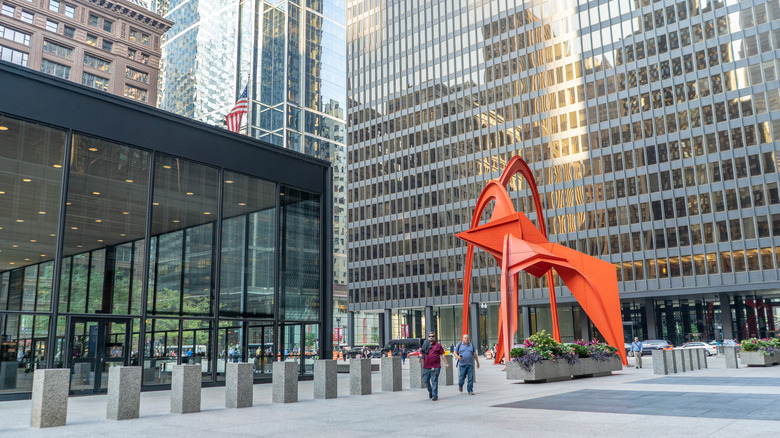
Page Light Studios/Shutterstock
“Cloud Gate,” aka The Bean, gets all the attention of public art lovers in Chicago. However, this sculpture is just one of hundreds of public art pieces in the city. You’ll find official public art — like The Bean or the untitled Picasso — as well as tons of other public artworks like murals, strewn throughout the city’s 77 community areas. Neighborhoods like Pilsen and Rogers Park are known for their artsy inklings. These two neighborhoods on opposite ends of the city have the most public murals in the city.
Other than the murals, there are several major public artworks that get overlooked by visitors. For example, the famed modernist Marc Chagall created a mosaic off of Dearborn and Monroe Streets downtown called “The Four Seasons.” This stunning work, made of thousands of pieces of hand-chipped stone and glass fragments, showcases the four seasons through six scenes set in Chicago. Not only is the intricacy of this work well worth the journey downtown, but it’s also incredible to see the ombre effect of the over 250 colors Chagall integrated into it.
Get prehistoric at the Field Museum
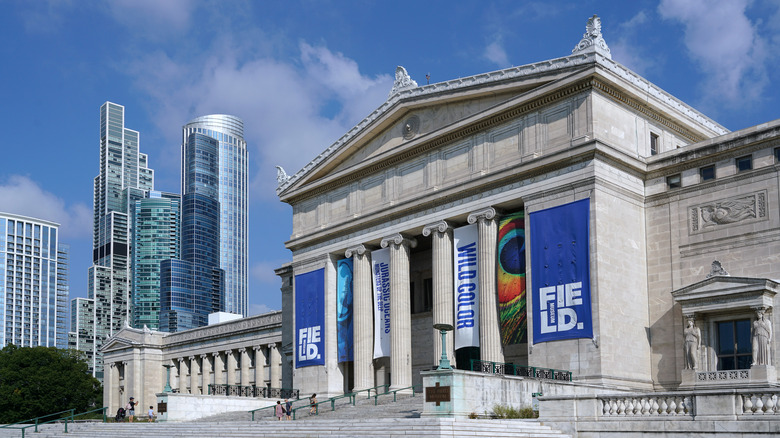
Peterspiro/Getty Images
Chicago’s Field Museum, a glorious example of Greco-inspired architecture, is one of the first places families should consider visiting. This behemoth of a museum is one of the largest natural history museums on Earth, and it’s home to millions of years of history. One of the Field’s most iconic residents is Sue the T-Rex, the largest T-Rex specimen ever recovered. Like the Art Institute, spending an entire day meandering the Field Museum is also easy.
If you only have time for a few of the exhibits in the Field Museum, there are some you just shouldn’t miss. Personal favorites at this jewel of a museum include the Cyrus Tang Hall of China, Griffin Halls of Evolving Planet, and Sue the T-Rex. Exhibits such as “Native Truths: Our Voices, Our Stories,” and “Inside Ancient Egypt” are also can’t-miss. Honestly, it’s hard to pick just a few galleries to check out. As a Field Museum fan, this writer highly recommends giving this one at least four hours to enjoy more fully.
Find your fishy side at the Shedd Aquarium
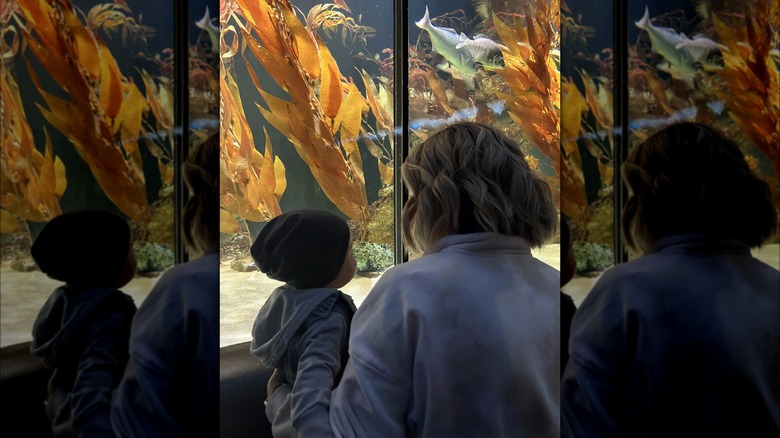
Amanda Finn / Explore
More of a temple to sea life than a museum, the Shedd Aquarium is another stunning example of Chicago’s unparalleled museum scene. That comparison to a temple isn’t an exaggeration either: the building is actually referred to as Neptune’s Temple. It was designed by Graham, Anderson, Probst & White, a firm known for its Beaux-Arts style architecture. You will find other similarly styled work at the Field Museum and the Wrigley Building downtown.
The Shedd is the third largest aquarium in the Western Hemisphere, in addition to being aesthetically pleasing. Tens of thousands of animals live there, making it a remarkable place to learn more about aquatic life as well as the mighty oceans that we know so little about.
It’s hard to choose just a few exhibits, but a short visit is possible if you want a smattering of the Shedd experience. Make sure you plot out your visit focusing on these exhibits if you’re short on spare time: the miraculous “Wild Reef,” “Oceans,” and “At Home in the Great Lakes.” That last one is particularly incredible, especially if you aren’t from the Great Lakes region. You won’t believe how much life there is in those gorgeous lakes.
Play around at Navy Pier
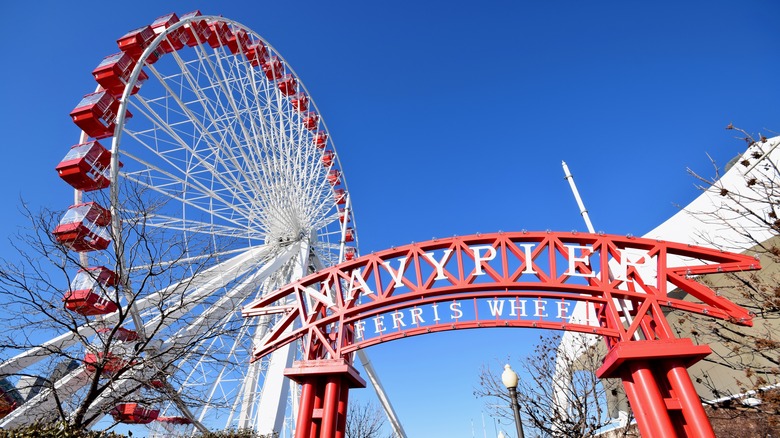
Phil Yang/Shutterstock
The Navy Pier is free to visit in Chicago, but what it costs when you visit depends on you. There are restaurants, shops, amusement park-style rides, boat rides, the Chicago Children’s Museum, and even the Chicago Shakespeare Theatre. Not to mention the incredible views of the city skyline from Navy Pier, which don’t cost a thing. Be forewarned, though, if it’s a windy day, you’ll feel that wind (and any chill that goes with it) doubly from Navy Pier — so bundle up.
Most of the Navy Pier stays open all year round, even in the brutal Chicago winter. Some of the amusement park rides, like the carousel, are only open seasonally, but the Centennial Wheel is open all year, weather permitting. That’s because the wheel has enclosed gondolas, so you can enjoy the sights of the nearby skyline with glistening snow-covered skyscrapers or brilliant spring colors.
Inside the Navy Pier shopping complex are many shops and restaurants in a mall setting. Grab some deep dish at Giordano’s, have a pint at Harry Caray’s Tavern, or just shop for some souvenirs or goodies. For this Chicagoan, some salted caramels from Kilwin’s are usually a must, especially during the Christmas season.
Immerse yourself in history at the Chicago Cultural Center
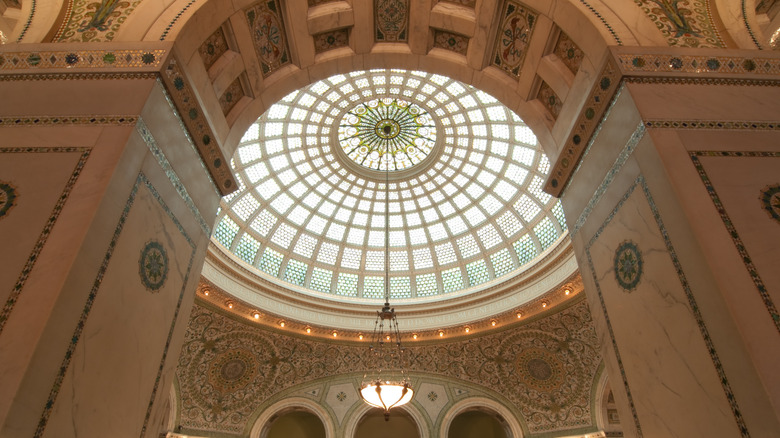
400tmax/Getty Images
A free, almost hidden gem in downtown Chicago, the Chicago Cultural Center is a spot that only some people know about. The CCC is open every day and its wide open access is part of the reason it is referred to as The People’s Palace. You can access the gorgeous building for free, and frequently rotating exhibitions are on display inside. Plus, there are frequent free performing arts events, films, and lectures to enjoy beyond the self-guided exhibition tours.
Some of the past rotating exhibitions have included “Nelly Agassi: No Limestone, No Marble,” “The Great Chicago Fire in Focus,” and “CHICAGO: Where Comics Came to Life (1880-1960).” Beyond expanding your horizons about the cultural world at large, the CCC is a wonderful place to enhance your appreciation for Chicago. It may not have the glitz of New York City or the glam of Hollywood, yet Chicago is one of the pivotal places for art in the United States.
When you’re wandering around downtown, take at least five minutes to pop into the CCC. If nothing else, be sure to see Preston Bradley Hall. Namely, you’re looking up to the ceiling to glimpse the outstanding Tiffany glass dome that overlooks the hall. It is the largest Tiffany glass dome in the world, a celebration of the art of Tiffany.
Take in some free art at Millennium Park
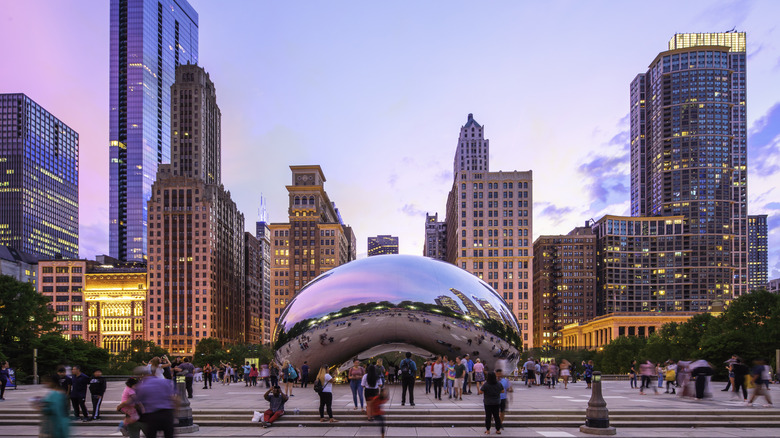
Aerial_views/Getty Images
Chicago’s most famous city park, Millennium Park downtown, is home to the world-famous “Cloud Gate,” or The Bean. Yet the park has much more to it than just its beany resident. For example, there is a skating rink in the wintertime, and the park houses the city’s traditional Christmas tree. There is also the Crown Fountain. Considered a live piece of art, the fountain displays faces that appear to spit water towards you. It’s not uncommon to see kiddos splishing around the foot of the fountain like a splash pad.
The abstract-style stage area at The Jay Pritzker Pavilion is where you’ll find free public musical events at the park. These are frequent events, particularly in the summer, that are beloved by Chicagoans. Several events take place every year that folks look forward to. Some of those include the Chicago Blues Festival, the Millennium Park Summer Music Series (on Mondays and Thursdays), the Millennium Park Summer Film Series (on Tuesdays), and the Chicago Jazz Festival.
One way to fully appreciate Millennium Park is to enjoy a day at the Art Institute and then walk over to the park using the elevated Nichols Bridgeway. You can admire the artworks at the museum before a casual stroll to Millennium Park for an evening picnic and show in the park.
Take in the sights on a Chicago Architecture Boat Tour
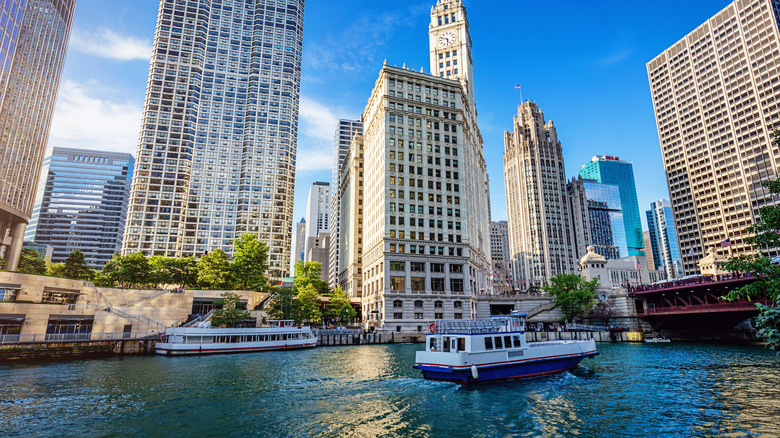
Mlenny/Getty Images
A quick glance down the Chicago River, and you’ll notice a bunch of boat tours. The trick is knowing which tour is the best. From personal experience, the best boat tour you’ll take in Chicago is the Chicago Architecture Boat Tour, offered by the Chicago Architecture Center. All the historical or architectural tours offered along the river are educational and entertaining. However, the CAC’s version is markedly better.
These tours are only 90 minutes, which zooms by as you cruise along the river. Your tour guide will tootle you through tales of over 50 of the buildings along the river. You’ll learn why there are shifts in architectural style from one area of the river to another and how Chicago exploded into a metropolis in less than a century. You’ll get your sea legs for the unique Windy City timeline. The best fun fact of all? The Chicago River runs backward.
Consider enjoying one of these cruises in the evening. There is something unspeakably inspirational about seeing the multi-hued sunset glimmering against the skyscrapers along the river. Especially the buildings that are green or blue-tinted — it’s like a kaleidoscope of color.
Experiment at the Museum of Science and Industry
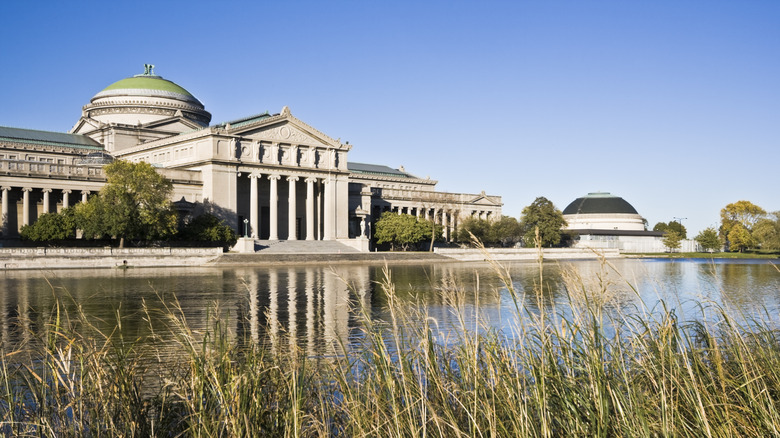
Benkrut/Getty Images
Housed in one of the only remaining buildings from the 1893 World’s Colombian Exhibition in Chicago, the Museum of Science and Industry (MSI) is also a work of art. That’s fitting as the name of the building for the World’s Fair was the Palace of Fine Arts — just goes to show that science is also an art form. Now, this former palace is one of the largest science museums on the planet.
This is one of Chicago’s museums that frequently updates its exhibit offerings. While a lot of the museum changes occasionally, there are also some more permanent standbys you can always expect to see. One of those collection items includes the Pioneer Zephyr. This incredible piece of ingenuity, which you can step inside of, was one of the world’s first diesel-electric streamlined passenger trains.
Hands down the most fascinating exhibit, though, is “Science Storms.” This hands-on exhibit lets visitors get connected to some of the wonders of the natural world. You can play around with seven natural phenomena: lightning, fire, tornadoes, avalanches, tsunamis, atoms, and even sunlight. Any exhibit that lets you play around with a Tesla coil is fun for this writer, no matter your age.
Go green with Garfield Park Conservatory
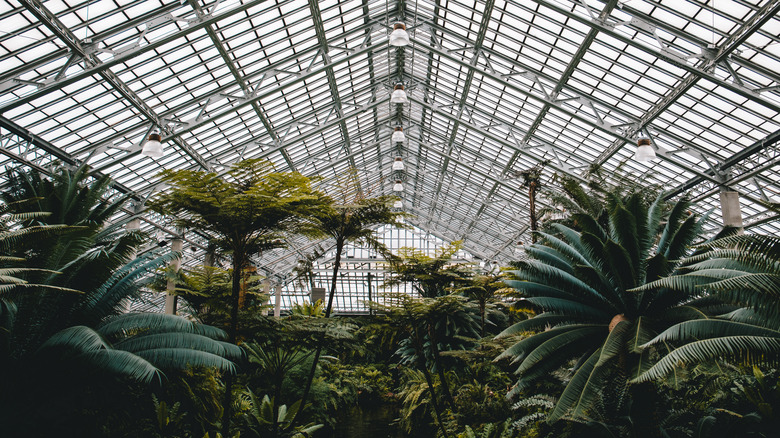
Outtherestudio/Shutterstock
One of the largest conservatories in the country, Garfield Park Conservatory has so much incredible flora to share with visitors. This free attraction in the larger Garfield Park is also adjacent to a public pool, fishing lagoon, tennis courts, and other sports facilities, which are also free to access. The Conservatory has been open since 1908, demonstrating Chicago’s dedication to engaging the public with the natural world.
Eight garden areas are housed within the conservatory complex, both inside and outside. There are also special garden events like the Spring and Winter Flower Shows throughout the year. As a big Christmastime fan, particularly of vibrant cuetlaxochitl (poinsettias), the winter show is a personal favorite.
The largest and most iconic part of the conservatory is the Palm House. When you see the structure of the conservatory, this is where the oversized dome is. This hall has over 70 full palms, thriving in the faux tropical environment. You will feel a special sort of joy walking through this garden, warming up from a cold winter day outside.
Enjoy more outdoor leisure at Grant Park
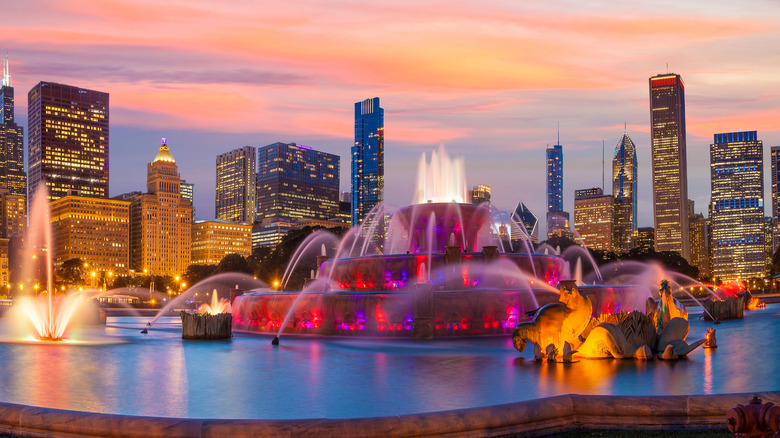
f11photo/Shutterstock
A bit like an underrated Millennium Park, Grant Park is another of Chicago’s incredible green spaces. Specifically, Grant Park is the larger green space that houses Millennium Park. However, because it’s so massive, at nearly 320 acres, a lot of visitors don’t realize that Grant Park houses so much of the green space in The Loop. It only makes sense that this area is also referred to as Chicago’s Front Lawn, as it practically hugs Lake Michigan.
This park deserves to be a visit on this list because it has always been an intrinsic part of Chicago. Its founding dates back to when the city itself was founded, although its original name was Lake Park before it was renamed after President Ulysses S. Grant.
Grant Park is also home to the gorgeous Buckingham Fountain, which is one of the city’s most iconic sights. Buckingham Fountain is so much more beautiful to this writer than the creepy Crown Fountain faces in Millennium Park. It’s also usually far less crowded. Fun fact: the Buckingham Fountain was modeled after a fountain at Versailles, which explains its grandeur.

